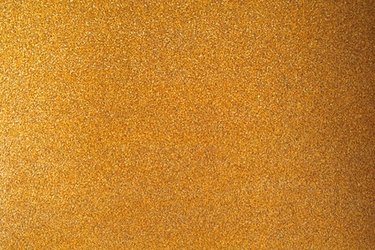Things You'll Need
Trisodium phosphate cleanser
Coarse plastic brush
120-grit sandpaper
Palm sander
Blue painter's tape
Masking paper
Acrylic spray primer
Appliance epoxy spray paint
Respirator

If you would like to rejuvenate the look of an aging granite sink, or if you would like to alter its color so it matches its surroundings better, you can accomplish your goal by coating it with the appropriate type of paint. However, because granite is ill-suited for paint adhesion, you will have to condition the surface through friction-based abrasion. In addition, you will need to apply a particular type of paint, capable of withstanding considerable duress.
Step 1
Scrub the granite sink clean with a trisodium phosphate cleanser, using a coarse plastic brush. Rinse the sink and wait for it to dry.
Video of the Day
Step 2
Abrade the granite sink to enhance surface adhesion by sanding it with 120-grit sandpaper. Load the sandpaper into a palm sander to ease the process. Scour the sink until it feels rough.
Step 3
Cover surrounding surfaces with masking paper. Tape the edges of the paper down with a low-tack painter's tape.
Step 4
Coat the clean granite sink with an acrylic spray primer. Hold the can 8 inches from the sink during the application process. Wait two hours for the primed granite sink to dry.
Step 5
Coat the primed granite sink with an appliance epoxy spray paint. Apply the paint just as you did the primer. Wait six hours before using the sink.
Tip
Wear a respirator if you are painting in an area with poor ventilation.
Warning
Do not paint a granite sink unless it has been sanded first, or the finish will fail.
Do not paint over an unprimed granite sink, or the paint will peel.
Do not use an ordinary oil-based or acrylic latex paint to coat a granite sink, as this will not provide enough durability.
Video of the Day